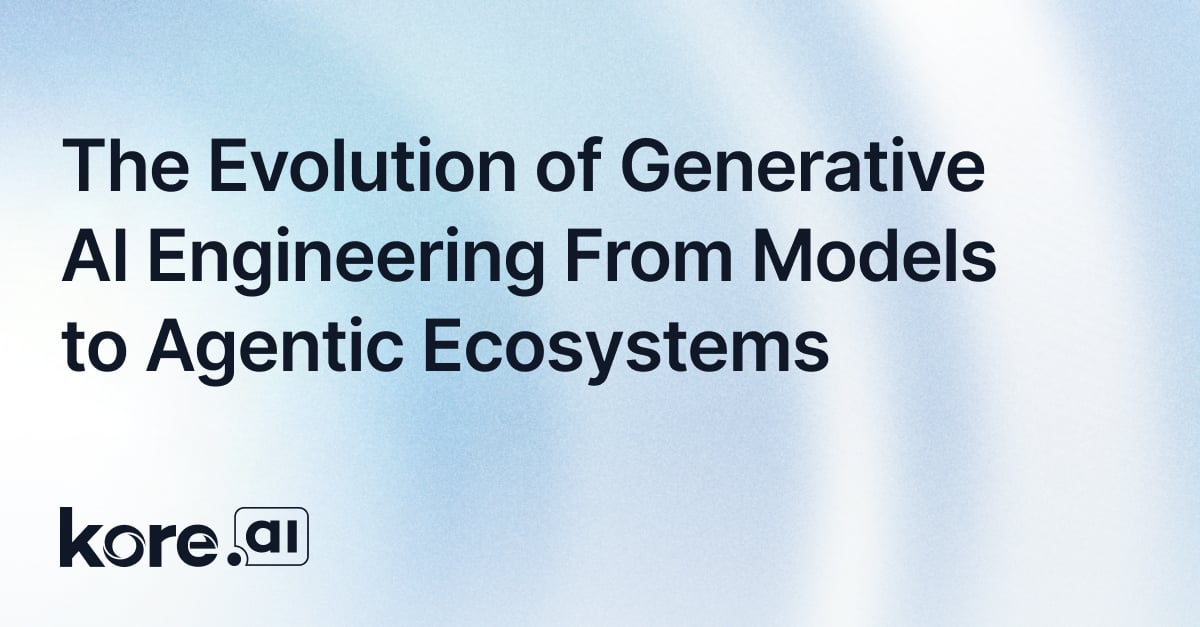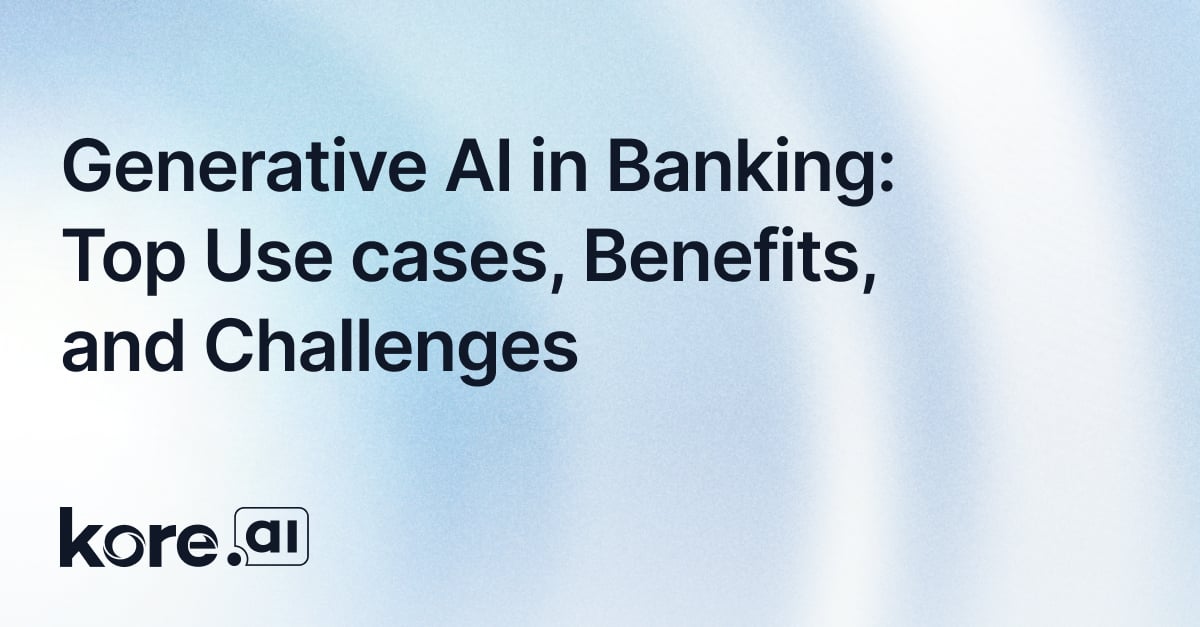The world has been captivated by OpenAI's newest Large Language Model(LLM) chatbot, ChatGPT, since it launched in November 2022. Thanks to ChatGPT's powerful NLU capabilities, it can effortlessly respond to the queries that are given to it in a conversational manner. Users are entertained by this chatbot's ability to rapidly generate poems, software code and general answers to questions. Its apparent breadth and depth of knowledge are remarkable, and its continuous development will undoubtedly have a big influence on the direction of conversational AI.
The buzz is justified because ChatGPT is based on a large language model (LLM) and can answer almost any question. The Large Language Models (LLMs) are capable of reading, summarizing, and translating texts that foretell the words that will come next in a sentence. This enables the technology to produce phrases that eerily resemble the way people write and speak. With this ground-breaking advancement in the Conversational AI market, one of the key queries being asked right now is, "How to use ChatGPT in your conversational AI project ?”
This dissertation will demonstrate the point, discuss some of ChatGPT's advantages and disadvantages, and show how its integration will benefit the conversational AI market without necessarily replacing the conventional Virtual Assistants.
ChatGPT vs Conversational AI systems
ChatGPT and conversational AI systems have certain similarities, but they are not directly comparable because they are each intended to serve a different function.
Watch Webinar:
Better Together: The Future of Intelligent Automation, Today with Kore.ai XO Platform and LLMs
Conversational AI platforms provide tools to build intelligent virtual assistants that let users speak with them in natural language dialogues to get a response and perform critical tasks. These platforms often provide a variety of tools and features required for any virtual assistant to operate efficiently, including conversation designer, dialog builder, machine learning models, natural language processing (NLP) algorithms, and enterprise connectors and analytics.
Despite being extraordinarily well-developed, pre-trained models that excitingly use AI, huge language models like ChatGPT have significant limits for being a reliable, intelligent virtual assistants. Let's explore the contrasts between ChatGPT and Enterprise Conversational AI’s technological advancements in more detail, as well as how organizations might use them to complement one another.
Here are a few issues with using ChatGPT alone -
- Security and Phishing Issues with ChatGPT:
The GPT-3 model has access to a tremendous amount of data because it was trained on billions of data points. The ability of ChatGPT to produce spam and phishing emails poses a security issue. The GPT-3 model can be used by spammers to create convincing emails that come from reliable sources. As part of ChatGPT’s operations, LLMs and other NLP models may collect and analyze personal data, such as names, addresses, and other identifying details. It is crucial to make sure that the collection and use of this personal data complies with all applicable data protection laws and guidelines. - Secure, On-Premise Deployments are Not Possible:
ChatGPT is a completely cloud-based service; on-premise hosting is not an option. Hosting customer-facing platforms on their own properties is standard operating procedure for many public, banking and health care sectors throughout the world as they maintain sensitive information and can control and monitor every aspect. These situations preclude the adoption of ChatGPT.
With GPT-3's 175 billion parameters requiring 800GB to store, large language models are computationally highly expensive. The model was trained using generative pre-training; it is trained to predict what the next token is based on previous tokens. According to Lambda Labs, training GPT-3 would cost over $4.6 Million using a Tesla V100 cloud instance. Additionally, as GPT-3 can only be accessible through OpenAI's API, creating test data in this manner would involve sending sensitive data, which is generally not a good idea. - Occasionally, Answers Are Not Factually Correct:
ChatGPT is a machine learning model created to generate text from enormous datasets; however, because it lacks access to outside knowledge or a grasp of the real world, their output is sometimes highly inaccurate. As a result, they could produce solutions that are based on data that is inaccurate, out-of-date, or inappropriate for the situation. Open.ai has addressed this issue and is working on it. - ChatGPT Cannot Help Enterprises with Their Critical Work:
ChatGPT lacks access to business process systems, or even basic customer or product data. This makes it less useful in the business ecosystem. It is clear that ChatGPT assists users in finding the answers to their inquiries. Can ChatGPT assist with a problem that is peculiar to an Enterprise, though? Absolutely not.
Evidently, ChatGPT cannot resolve questions or FAQs that are exclusive to a certain company or specific customer on their own. This is one of the most crucial distinctions between ChatGPT and virtual assistants.
Benefits of integrating ChatGPT with Enterprise Conversational AI:
- Customer Intent Can Be Recognised Automatically: By analyzing the language and semantic meaning of the utterance using massive language models that have already undergone training, virtual assistants may detect the correct intent automatically. There is no requirement that you offer any training utterances. The process of accepting a written or spoken input and classifying it according to what the user intends to accomplish is known as intent recognition, also known as intent classification. Intent recognition is a crucial component of chatbots and has applications in customer service, sales conversion, and many other fields.
- Generative AI Can Produce New Text, Audio or Images: The technology known as generative AI allows users to produce new text, audio, or visual output using pre-existing materials. Text output can be produced by generative AI technologies, and they can also have interactions with users. There are numerous methods, including:
- Transformers: Transformers that mimic cognitive attention, such as GPT-3, LaMDA, Wu-Dao, and ChatGPT, differentially estimate the importance of the input data portions. They receive training to comprehend the language or image, learn how to classify data, and produce words or images from enormous datasets.
- GANs, or generative adversarial networks: GANs are neural networks that compete with one another to find an equilibrium between the two: a generator and a discriminator.
- Differential auto-encoders: The decoder recreates the original information from the compressed code that the encoder created from the input. This compressed representation stores the input data distribution in a considerably reduced dimensional representation if it is selected and trained properly.
- Semantic Search
Semantic search gives virtual assistants a means to comprehend the “meaning” and context of words and phrases, enabling them to respond to user queries with more precise and pertinent information. This word "meaning" is connected to a very complex idea. The question that emerges is how a machine can comprehend meaning when it is similarly challenging for humans to apprehend meaning?This is where “embeddings” come into picture. Simply put, text is represented as a list of real-valued numbers, or vectors, in an embedding. It is, in essence, a means to translate natural language into numbers that Virtual Assistants can understand. In general, embeddings are used to represent data in a way that preserves its natural structure while facilitating easy manipulation and analysis by machine learning algorithms.
The semantic space is referred to as "semantic" because it captures the meaning of the words or phrases, and it is referred to as a "space" because the vectors are set up in a multi-dimensional coordinate system. - Cautions for Using ChatGPT for Customer Service:ChatGPT, after a lot of training, is seen to effectively generate automated responses for some of the client’s frequently asked questions, which helps reduce the customer service requests and improve the user experience. However, it’s important to note that Chat GPT does not have the ability to understand language and human communication nuances, so there may be limits to its use for customer service. Overall, Chat GPT can be successfully used to automate certain simple customer service tasks using its automated content generation capabilities, but it’s important to monitor Chat GPT’s performance and ensure it’s used appropriately for customer service by regularly testing.
Suggested Read: Why ChatGPT Is Not A Replacement For Enterprise Conversational AI Platforms
Leveraging ChatGPT and other LLM Technologies
So, the best way ahead as we move into the next wave of conversational and generative AI will be to leverage the capabilities of ChatGPT and other LLM technologies to enhance the conversational experience while choosing a more controlled, security-heavy engine operated on corporate data. The potential of conversational automation is virtually limitless when the most potent broad language model in the world is combined with current, specific knowledge. Overall, ChatGPT is a potent tool that may be used to enhance the human-like tone of virtual assistant dialogues, but it is only one component of the conversational AI platform that must be developed and deployed.
We at Kore.ai spent a lot of time investigating the intriguing potential of ChatGPT in the enterprise context and are building some exciting features that enable our users to use this technology while developing intelligent virtual assistants.












